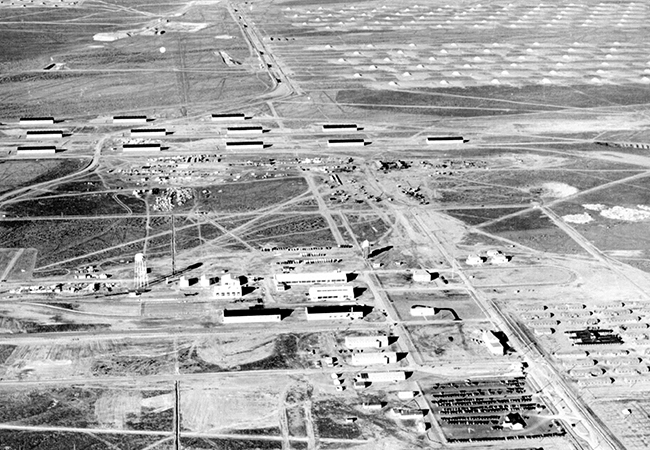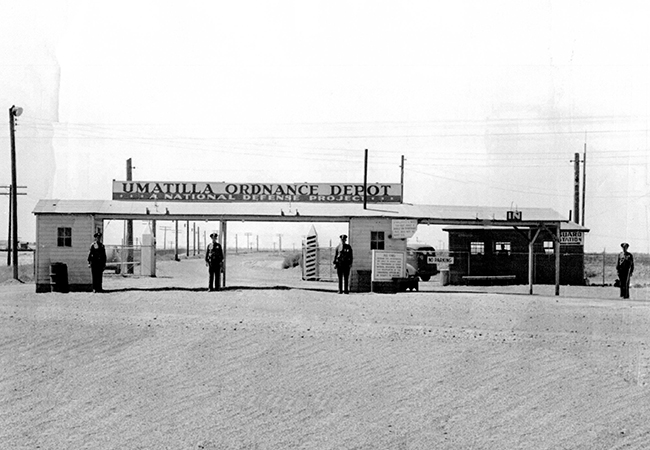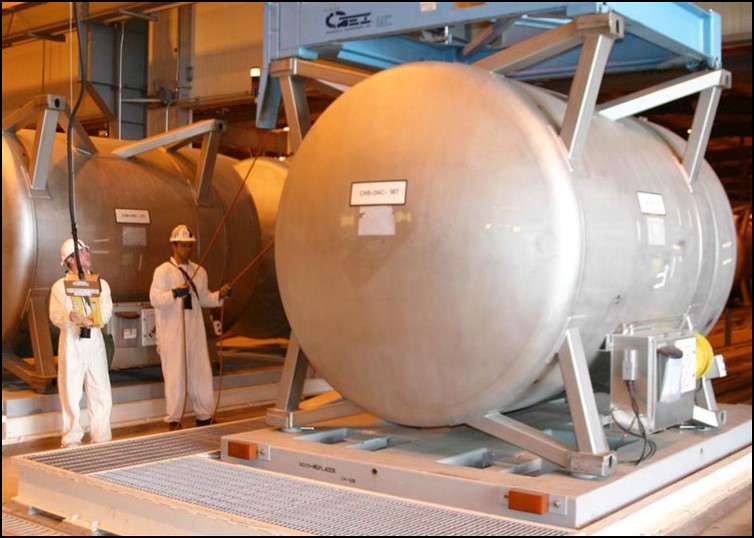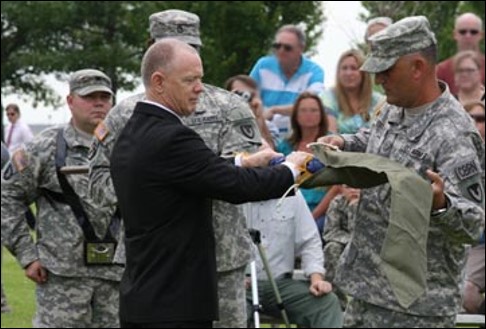 In 1940 the Army created what was to become the 17,165 acre Umatilla Army Chemical Depot (UMCD) in Northeastern Oregon. On November 14, 2008 the United States Army issued a surplus determination for the UMCD property. The Local Redevelopment Authority (LRA) comprised of Morrow County, Umatilla County, Confederated Tribes of the Umatilla Indian Reservation, Port of Morrow and Port of Umatilla completed and adopted a Redevelopment Plan in 2010. The destruction of the UMCD stockpile of chemical weapons was completed in 2011 and Base closure occurred in 2012. In September of 2014 the LRA reorganized itself as an I-LRA, recognized by the Secretary of the Army, and was renamed the Columbia Development Authority (CDA).
In 1940 the Army created what was to become the 17,165 acre Umatilla Army Chemical Depot (UMCD) in Northeastern Oregon. On November 14, 2008 the United States Army issued a surplus determination for the UMCD property. The Local Redevelopment Authority (LRA) comprised of Morrow County, Umatilla County, Confederated Tribes of the Umatilla Indian Reservation, Port of Morrow and Port of Umatilla completed and adopted a Redevelopment Plan in 2010. The destruction of the UMCD stockpile of chemical weapons was completed in 2011 and Base closure occurred in 2012. In September of 2014 the LRA reorganized itself as an I-LRA, recognized by the Secretary of the Army, and was renamed the Columbia Development Authority (CDA).
World War II and the Depot
The US Army specifically picked this location in Eastern Oregon, because it was vast, had a low population, and was located near the Columbia River, railroad tracks and major highway system. The 17,000 plus acres was owned by local people and the BLM. Construction of the Umatilla Army Ordnance depot began in January 1941. At the peak of the 35 million construction of the depot there were over 7,000 people who worked there.
There are one thousand and one igloos. They were built on this parcel of land and are camouflaged from the air. They blend into the natural habitat of the landscape there. The are two sizes of igloos some are 30 by 80 feet, and some are 24 by 61 feet. The ends and sides are ten inches of reinforced concrete, covered with two feet of dirt.A fascinating record was met on September 24, 1941, twenty-four igloos were built in one day.
 War Time Munitions
War Time Munitions
- First munitions shipment received Oct. 27, 1941
- Depot employees worked around the clock during WWII
- Also supplied conventional weapons for U.S military operations in Korea, Vietnam, Grenada and Operation Desert Storm
Igloo Explosion the Depots Darkest Day in History - March 21, 1944
Read: "Depot marks 75 years since igloo explosion", by Jade Mcdowell in the East Oregonian on March 20, 2019
- Crew had been loading 500-lb. bombs (264 were in the igloo when it exploded)
- Six civilian workers (5 men, 1 women) died in the blast
- Blast was heard 30 miles away and broke windows up to 20 miles away
- Exact cause of the explosion was never determined
- Igloo construction design worked
- Steel reinforced concrete walls vary from feet at base to 1 foot at the top, then covered by 2 feet of earth
- Explosion went up rather than out – surrounding igloos were not damaged
Chemical and Munitions Stored at the Depot
- Depot assigned new mission in 1962 - receive and store chemical munitions
- Facility renamed Umatilla Chemical Depot
- Received various chemical munitions between 1962 and 1969
- Originally stored 11.6% of the U.S. stockpile of chemical weapons
- Last of depot’s conventional weapons shipped off in early 1990s
Disposal of Chemical Weapons
- U.S. endorsement of the Chemical Weapons Convention treaty prompted construction of plants across the country to destroy the country’s stockpile
- Umatilla Chemical Agent Disposal Facility (UMCDF) was constructed between 1997 and 2001
 Enhanced On-site Containers (EONCs)
Enhanced On-site Containers (EONCs)
- Munitions were transported from igloos to the plant in EONCs
- EONCs were designed to be resistant to fire, impact, puncture or crushing
- 7,534 EONC deliveries without incident
End of Destruction
- Sept. 2004 – Demilitarization operations begin
- Oct. 2011 – End of operations
Munitions and Agents Destroyed at UMCDF
- GB nerve agent - 155,543 munitions / 1,014 agent tons
- VX nerve agent - 62,426 munitions / 364 agent tons
- HD blister agent - 2,635 ton containers / 2339 agent tons
Toxic Areas Destroyed
- As required by its operating permit with the state of Oregon, after the stockpile was destroyed UMCDF demolished the toxic areas of the plant (the building where chemical weapons were processed and the associated pollution abatement systems).
- Other areas of the site were preserved for potential reuse.
 Deactivation Ceremony
Deactivation Ceremony
- The U.S. Army held a deactivation ceremony at the depot on July 17, 2012, marking the end of the installation’s mission of safely storing conventional and chemical munitions
- (Photo: Don Barclay of CMA and UMCD Commander Lt. Col. Kris Perkins case the colors)
Recent History
- The Umatilla Chemical Depot was added to the Base Realignment and Closure Act in 1988 and again in 2005
- In 2009 the depot’s community- based Local Redevelopment Authority (LRA) was officially recognized by BRAC
- The demolition of UMCDF after the completion of demilitarization set the stage for returning depot land to public use
- 2014 I-LRA becomes Columbia Development Authority (CDA). The CDA is made up of the Port of Umatilla, the Port of Morrow, Umatilla and Morrow Counties as well as the Confederated Tribes of the Umatilla Indian Reservation
- The Redevelopment Plan recommended a 7,500-acre transfer to the Oregon National Guard via a federal transfer to the National Guard Bureau (NGB) for a permanent, large-scale training facility. Planning and development for the training facility are underway, and the transfer occurred in 2017
- The Transfer of the Land from the Army to the Columbia Development Authority took place in spring 2023.
The Columbia Development Authority (CDA)
In 1940 the Army created what was to become the 17,165 acre Umatilla Army Chemical Depot (UMCD) in Northeastern Oregon. On November 14, 2008 the United States Army issued a surplus determination for the UMCD property. The LRA comprised of Morrow County, Umatilla County, Confederated Tribes of the Umatilla Indian Reservation, Port of Morrow and Port of Umatilla completed and adopted a Redevelopment Plan in 2010. The destruction of the UMCD stockpile of chemical weapons was completed in 2011 and Base closure occurred in 2012. In September of 2014 the LRA reorganized itself as an I-LRA, recognized by the Secretary of the Army, and was renamed the Columbia Development Authority (CDA).
Eastern Oregon Future is Bright
The following EDC application is submitted by the CDA.
In total, an estimated 1,477 positions were lost with Base closure representing total labor income of $76 million annually. The impact has been felt regionally across Morrow and Umatilla Counties, Oregon and as far north as Tri-Cities, Washington. The Redevelopment Plan calls for the creation of a 7,500 acre National Guard training facility, 5,700 acre multi-use refuge, and approximately 3,965 acres of industrial/agriculture/right-of-way redevelopment acreage. If approved, the EDC is projected at full build-out to generate approximately 4,249 new positions for the region, $285 million in direct and indirect payroll benefits, and $3.6 million in property taxes to support community services. Due to anticipated slow absorption rates and other factors, the above mentioned benefits will likely require decades to be realized, but the EDC represents the best potential redevelopment scenario for the regional community.
 Wildlife Habitat
Wildlife Habitat
- The depot is a nature preserve
- An antelope herd of about 60 was managed by ODFW, which transplanted the herd off site in 2013
- 12 varieties of Russian thistle or “tumbleweed” thrive on depot
- Burrowing Owls